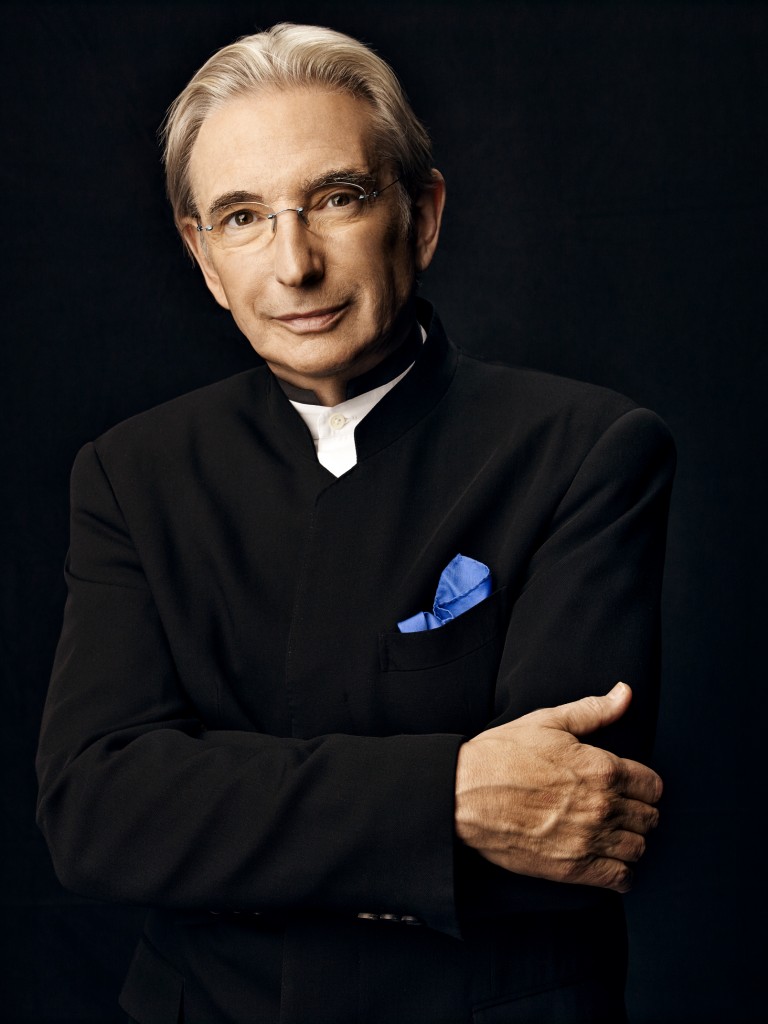Tilson Thomas, San Francisco Symphony off their stride in an erratic Mahler Seventh

Michael Tilson Thomas conducted the San Francisco Symphony in Mahler’s Symphony No. 7 Wednesday night at Carnegie Hall. Photo: Art Streiber
After his triumphant last-minute substitution with the Philadelphia Orchestra last year, the prospect of hearing Michael Tilson Thomas with his own San Francisco Symphony was an exciting one. Moreover, Tilson Thomas is renowned as an interpreter and scholar of Mahler, having completed a well-regarded recording cycle with the SFS. His performance of the Seventh at Carnegie Hall on Wednesday promised the makings of a memorable evening.
But with those expectations in mind, Wednesday’s concert at Carnegie Hall was a bit of a disappointment. It took time for the orchestra to hit its stride, and even then, Tilson Thomas’s interpretation of the famously problematic Seventh never quite hit the mark.
The symphony opened with plenty of mystery, the imposing, eerie tenor horn solo looming over the tremolos of the strings. Otherwise, the SFS did not make a particularly strong first impression, struggling to attack together and not showing much in the way of a distinctive sound. The winds were clumsy and the strings sounded metallic, even at the first movement’s swelling, romantic peak, where the orchestra’s playing was broad, but their tone acerbic.
The first “Nachtmusik” began with a sour horn solo, and again the woodwinds were uneven, with warbling stretches interrupted by more off-kilter hooting. Something about this movement just felt constantly off balance, as though not everything was landing at the right time, or at the level that Tilson Thomas wanted (he leaned over to give the second violins a bit of coaching at the next pause). Things began to congeal as the march plodded dolefully onward, but noticeable ensemble gaps cropped up again during the glorious major transformation towards the end of the movement.
The most technically solid movement of the five was the third, which Tilson Thomas built with clockwork precision in the opening lines. “Schattenhaft,” or “shadowy,” is Mahler’s idiosyncratic marking, and the SFS added a bit of dark smoke in this rough, taunting Scherzo.
Shades of Fritz Kreisler came through in concertmaster Alexander Barantschik’s pining solo to open the second “Nachtmusik” movement. The rest of the strings followed suit, and we finally began to hear real warmth out of them for the first time all evening. Still, Tilson Thomas’s conducting felt unfocused. When the tempo moved, or the volume swelled, the energy would suddenly come into focus, and we were able to get our bearings for a moment. But when the picture scaled back once more into sparse, contained writing, the music fell back into what felt like aimless wandering.
The Finale was, in character at least, everything it should have been—ringing and bright, it began with joyous bombast, and grew spacious as it moved forward. The conclusion was especially thrilling, tantalizing in its delayed ending (one audience member jumped the gun and applauded vigorously over the subito piano just before the final chord) but even then, Tilson Thomas’s conducting was inscrutable. There was no doubt, as the brass blared and the triangle glittered, that we had finally arrived, and yet the arrival seemed to come out of nowhere—how or why we had gotten there was a complete mystery.
Michael Tilson Thomas and the San Francisco Symphony will perform 8 p.m. Thursday at Carnegie Hall, presenting Ravel’s complete Daphnis et Chloé, the New York premiere of Samuel Adams’s Drift and Providence, and Prokofiev’s Violin Concerto No. 2 with soloist Gil Shaham. carnegiehall.org.